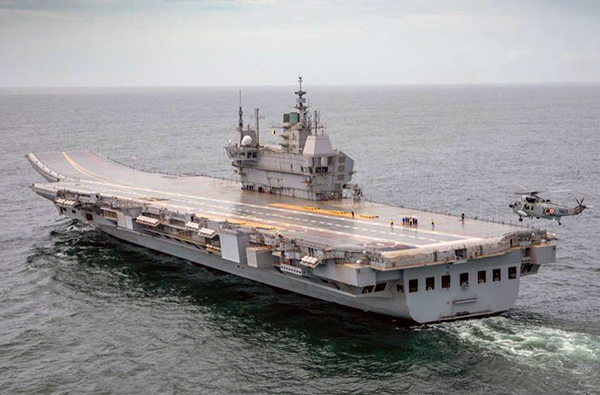
State-owned Cochin Shipyard Limited (CSL), on 28 July, handed over India’s first indigenous aircraft carrier Vikrant — the largest warship to be built in the country — to the Indian Navy ahead of its planned induction into service next month, the navy said.
The development marks the culmination of a long journey – the carrier’s construction began in 2009.
“With the delivery of Vikrant, India has joined a select group of nations having the niche capability to design and build an aircraft carrier,” the navy statement read.
It has been built at a cost of around ₹20,000 crore and will significantly boost the country’s naval presence and its reach, navy officials said. The warship’s delivery comes in the backdrop of rigorous user acceptance trials carried out between August 2021 and July 2022.
Vikrant has put India in a select league — only the US, the UK, Russia, France and China have the capability to build aircraft carriers. The 262-metre-long carrier has a full displacement of 45,000 tonne. It has been named after aircraft carrier INS Vikrant, operated by the navy from 1961 to 1997.
It has an indigenous content of 76%. It is a “perfect example of the nation’s quest for Aatmanirbhar Bharat and provides thrust to the government’s Make in India initiative,” the navy said.
Describing Vikrant as a great national achievement, former navy chief Admiral Arun Prakash (retd) said the aircraft carrier will enhance the country’s power projection and sea control capabilities in the Indo-Pacific.
“Building it has taken much longer than it should have. But it’s a good learning experience. It will be meaningful only if we follow it up with a second indigenous aircraft carrier. Otherwise, the skill and expertise that we have acquired will die out, and it will be a huge national loss,” Prakash added.
It will operate an air wing consisting of 30 aircraft, including MiG-29K fighter jets, Kamov-31 choppers, MH-60R multi-role helicopters, advanced light helicopters and light combat aircraft (navy).
The fighters on board the aircraft carrier will use the ski-jump to takeoff and will be recovered by arrestor wires or STOBAR (short takeoff but arrested recovery) in navy parlance.
Vikrant is also expected to operate a new deck-based fighter that the navy is planning to buy — it has already tested Boeing’s F/A-18E Super Hornet and Dassault Aviation’s Rafale-M.The carrier was designed by the Indian Navy’s directorate of naval design. It has 14 decks, including five in the superstructure, 2,300 compartments, and can accommodate a crew of 1,700, including specialised cabins for women.
India currently operates a solitary aircraft carrier, INS Vikramaditya, bought second-hand from Russia for $2.33 billion, but the navy has been arguing it needs three such floating airfields given its vast area of interest.
Vikrant will be commissioned into the navy barely two months after China launched its third aircraft carrier, the first such designed and built entirely in that country. The launch of the new carrier called Fujian on June 17 came against the backdrop of China’s push for greater maritime influence in the far seas and as its warships attempt to leave their mark in Pacific and Indian Ocean regions.
A warship’s launch marks a significant milestone in its construction and refers to the vessel entering the water for the first time. China currently operates two aircraft carriers — CV-16 Liaoning and CV-17 Shandong.
Vikrant will be the fourth aircraft carrier to be operated by the Indian Navy, first Vikrant (British origin) from 1961 to 1997, INS Viraat (British origin) from 1987 to 2016 and INS Vikramaditya (Russian origin) 2013 onwards.

















